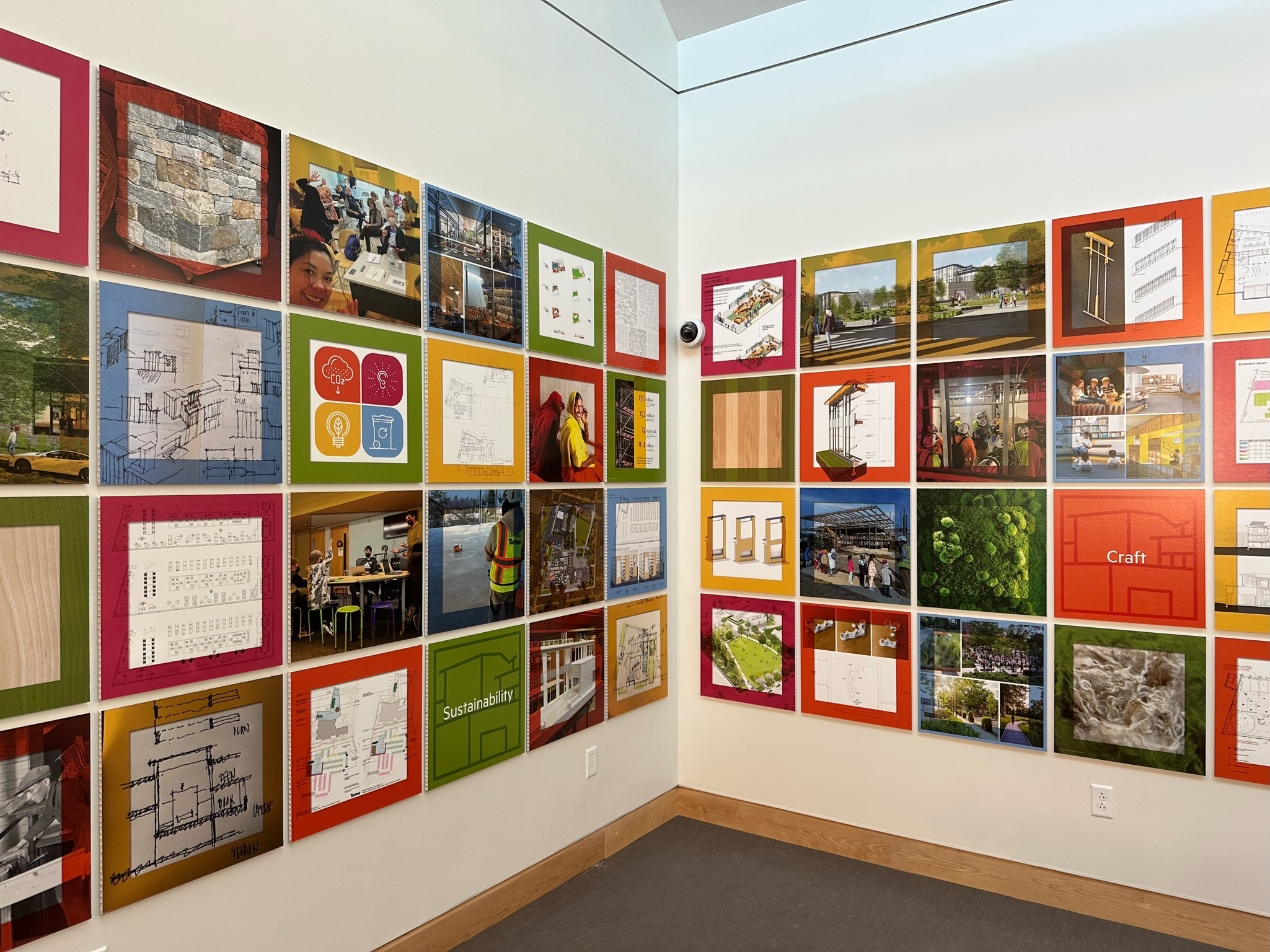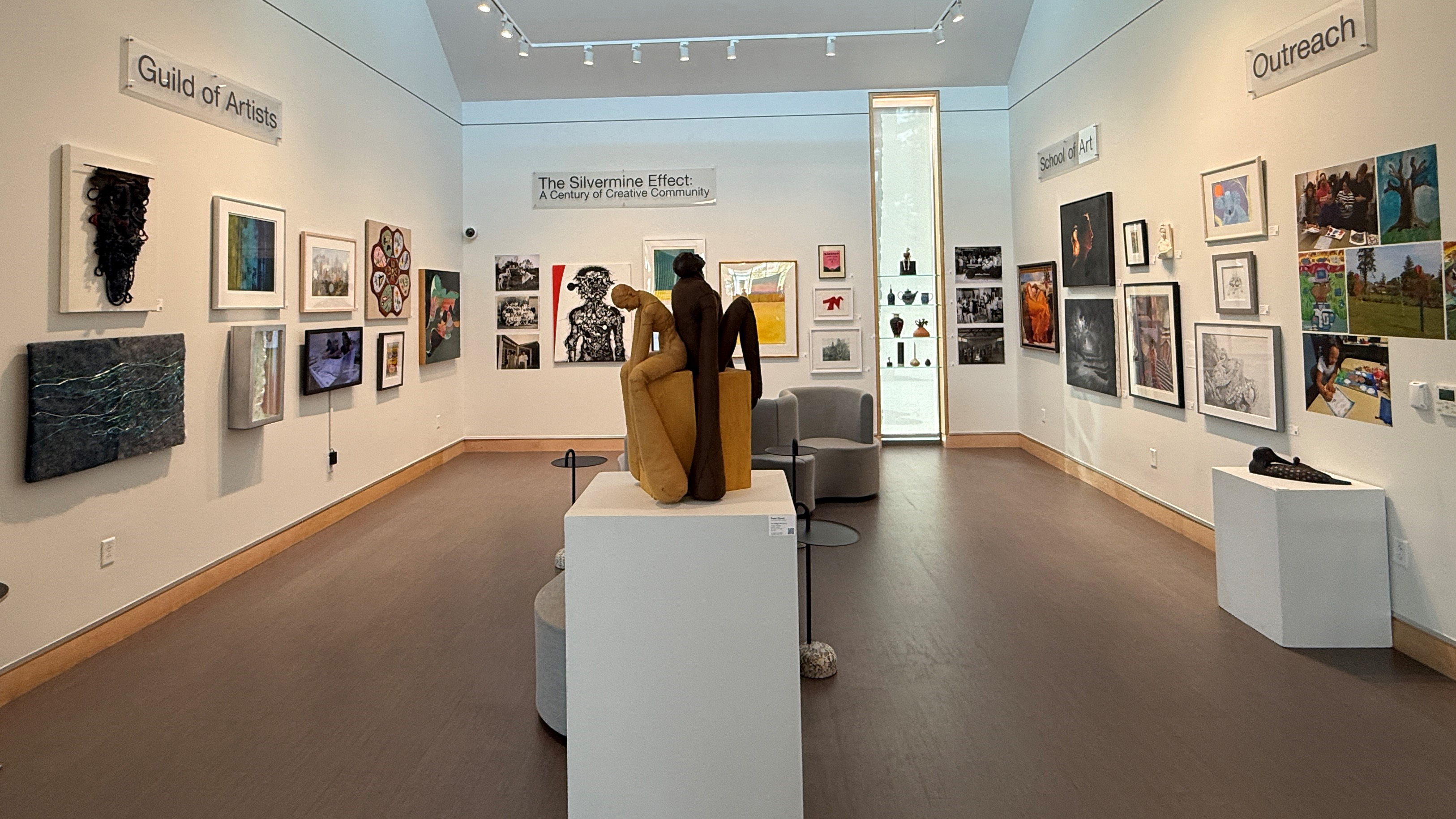
Libraries are platforms for lifelong learning, and the arts can serve as a portal for understanding ideas and issues. Intentionally situated at the heart of the action, our new gallery is a dynamic space for culture, designed to engage the broadest spectrum of library patrons. Exhibitions will be integrated with our professionally developed adult and family services programs and collections, to provide experiences that will educate and inform as they also challenge popular notions of the role of art in our world.
Exhibitions will run quarterly or biannually, developed internally with experienced guest curators to keep our offerings fresh and innovative. Visitors can explore chosen themes in diverse ways—by viewing original works, installations, or didactic displays, listening to recordings, watching videos, chatting with specially trained volunteer docents.
We see libraries as infrastructure for imagination—the key to building a better future. Our new building, including our art gallery, allows us to expand our reach in this direction.
